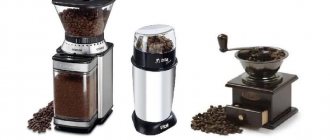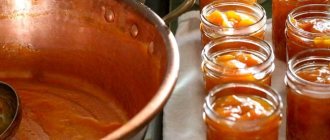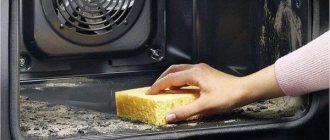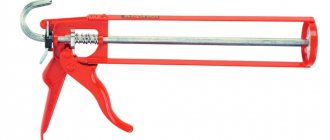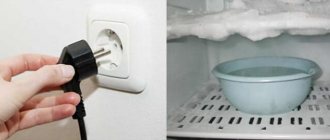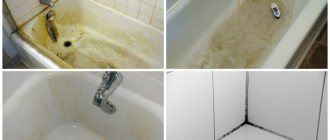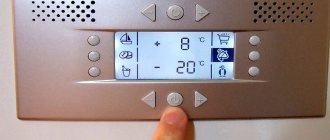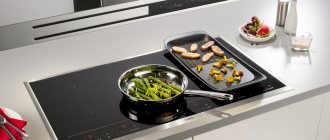What are the different types of oven cleaning?
Available options:
- pyrolytic cleaning;
- catalytic;
- hydrolysis (removal of contaminants with steam);
- cleaning surfaces with detergent.
Each method is implemented differently. What unites them all is the thermal effect. Moreover, the intensity of heating depends on various factors: the method of removing contaminants, the type of coating, the use of auxiliary products. When heated, the properties of substances change. As a result, dirt is better separated from the oven walls.
What is the essence of steam cleaning technology?
This method is based on the effect of hot steam on baked food remains. At the same time, suitable conditions are provided: the temperature rises, the humidity of the air inside the cabinet increases. As a result, the contaminants soften. Some of the substance evaporates. Remaining stains can be easily removed by mechanical cleaning. This technique has its own name - hydrolysis oven cleaning.
Steam helps remove various types of contaminants, including fatty components. However, there is no guarantee that the cabinet will be completely cleaned. The most difficult stains will have to be washed off yourself. Steam in the oven is created when liquid is heated. Instructions for implementing this technique:
- Prepare a container that should be filled with water. You can use the liquid without additives. However, to speed up the cleaning procedure and increase the effectiveness of the method, it is recommended to add detergent.
- The oven door closes. The temperature regulator is set to 200°C.
When considering this type of oven cleaning, there are a number of features that need to be taken into account. Positive traits:
- simplicity of the technique;
- availability of available materials (detergent and water);
- you don’t have to spend a lot of time removing stains;
- In most cases, no physical effort is required to clean after the steaming procedure is completed.
Disadvantages of this method:
- this technique cannot be used often; it is better to alternate it with another method;
- if you use insufficient amounts of water, minimal amounts of steam are generated, so the stains are baked in more strongly and it will be more difficult to remove stains;
- even a self-cleaning oven requires human intervention: you need to place a container with water inside or use a special spray that will act as steam (this feature is implemented in devices with the Cleaning system).
The technology will help the device independently remove stains inside; for this, a special self-cleaning function is provided. The mechanism of action in this case is similar to the method of removing stains on your own:
- The oven is emptied of dishes and baking sheets.
- A heat-resistant container filled with water is placed at the bottom (400 ml is enough).
- The “Self-cleaning” mode is set.
- After some time, the device will notify you that the program has ended. In this case, a significant part of the contaminants will be removed. Surfaces are cleaned with the non-abrasive side of a sponge or soft cloth. It is important to wipe the walls dry before turning it on for further use.
Once the cleaning procedure is completed, the oven doors should be opened with caution as there is hot steam inside. In addition, drops of water can burn your hands. Repeated cleaning may be necessary to remove old stains. The procedure can be repeated as many times as necessary to remove all stains from the inner walls.
Comparison of self-cleaning systems
So, which type of automatic oven cleaning is best, since each of them has a lot of pros and cons? For clarity, we present to your attention a table with the operational features, advantages and disadvantages of all three self-cleaning technologies.
| Pyrolysis method | Catalytic technology | Hydrolytic method | |
| Operating principle | Decomposition of organic matter at high temperatures in conditions of lack of oxygen | Breakdown of organic contaminants under the influence of catalysts | Softening fat deposits under the influence of steam |
| Energy consumption | High | Average | Low |
| Process temperature | 500 °C | 140-200 °C | 50-90 °C |
| Required frequency of procedure | As it gets dirty | After every meal preparation | After every meal preparation |
| Efficiency | Self-removes any dirt | The method is effective for removing fresh fat deposits | Softens contaminants and requires manual post-cleaning |
| Consumables | No | Panels need to be replaced at the end of their service life | Water, detergent, cleaning supplies |
| The need for additional cleaning with detergents | No | Yes | Yes |
| Price | High | Average | Low |
Types of systems and how it works
So, there are three main types of cleaning electric ovens:
- pyrolysis;
- catholysis;
- hydrolysis.
Each variety works differently and has its own pros and cons. Let's look at the operating principles one by one.
It is the most aggressive and most effective. We can only use it in electric ovens, as it requires the highest temperature (up to 500 degrees).
The oven heats up to maximum temperature, and natural combustion of all contaminants on the surfaces occurs. After which the combustion product - ash - is removed from the oven with a regular rag or a special brush.
With this method of getting rid of dirt, the entire process occurs completely autonomously, without your participation. Manufacturers also took care of safety - the oven door is completely locked during the procedure.
Here the main role is played by the coating of the oven chamber - eco-enamel. It has a porous surface and contains oxides of copper, cerium and manganese. It is these three elements that help clean the surface - even at low temperatures, the process of decomposition of contaminants into water, carbon and organic residues begins.
On the one hand, the convenience of this method is that there is no need to specifically start the cleaning system - it begins to operate when heated from 150 degrees, that is, during cooking.
On the other hand, some parts of the chamber will have to be cleaned yourself, since the bottom, inner surface of the door, grilles, etc. do not have such a coating.
This system works using steam and liquid. Here you still have to work hard manually, but it is a little easier than with the traditional method.
The point is this. Place a baking sheet with water in a preheated oven and remain there until the water evaporates. With this effect, the contaminants seem to “ferment,” become soaked, and they become easier to remove. And they are removed with a rag or sponge, as usual.
The effectiveness of this method directly depends on the age of the contaminants and their quantity.
Now, knowing the operating diagram of the types of oven cleaning, let’s consider the pros and cons of each.
There are several ways to clean ovens, so when choosing, you should base your choice on your own habits and preferences.
So, if you plan to bake a couple of times a week, a catalytic cleaning system is a good option. With infrequent use, it will not get very dirty, so removing dirt from the bottom and door will not be difficult.
If the unit is used frequently (every day or every other day), it is worth investing in a device with a pyrolysis system. Here, first of all, you should take care of the time and effort of the housewife - she is unlikely to want to spend half an hour every day on cleaning. This is where an automatic cleaning system comes to the rescue.
These are all the main ways to keep ovens clean, the principle of their operation, advantages and disadvantages. But you will have to decide which type of oven cleaning is better in each individual case, depending on the desire to save money when buying an oven, electricity during its operation, or time for cleaning.
Ovens with hydrolysis
No. 5 – Gorenje BO735E20B-2
Gorenje BO735E20B-2
This oven is chosen by many because of its relatively low cost and optimal functionality for most. The model will cost the buyer only 18 thousand, but will last for many years and is distinguished by its sufficient size and the presence of a hydrolysis type of wall cleaning.
The volume of this model is 71 liters, energy consumption class A, that is, it uses electricity quite economically. Power is 2.7 kW. The oven is equipped with convenient rotary switches and a touch display, and has a grill and convection. But there are only two glasses in the door.
As buyers note, there is an AquaClean cleaning system that does its job perfectly. This is a budget and functional option that is suitable for installation in a rented apartment or for those who are saving their money. One of the disadvantages is the absence of a temperature sensor. But a nice design will not spoil the interior.
pros
- inexpensive model
- large volume
- convenient use
- has all the necessary functions
- stylish design
Minuses
- no temperature sensor
- Trays may become deformed when exposed to high heat
Prices for oven Gorenje BO735E20B-2
Gorenje BO735E20B-2
No. 4 - Weissgauff EOV 19 MW
Weissgauff EOV 19 MW
This model is even cheaper than the one described above - the buyer will have to pay about 10 thousand rubles for it. It is smaller in size, but has more power.
The volume of this oven is 50 liters, the maximum heating temperature is 250 degrees, but for preparing standard dishes you don’t need more. Moreover, the oven has 9 heating modes, and choosing the right one for a particular dish will not be difficult. Hydrolysis type cleaning, grill and convection functions. The number of glasses in the door is also 2 pieces.
Among the advantages, users highlight the attractive design, neat execution, cost and the presence of an electric plug in the kit. However, the glass gets very hot during cooking, and it is important not to get burned while creating a culinary masterpiece. As for cooking, due to the large number of modes, cooking in the oven is a pleasure. It cleans much better than the previous model.
pros
- budget model
- stylish design
- easy to clean
- plug included
- 9 heating modes
Minuses
- small volume
Prices for Weissgauff EOV 19 MW oven
Weissgauff EOV 19 MW
No. 3 – Hansa BOEI64030030
Hansa BOEI64030030
Also quite a budget model, costing from 15 thousand rubles, which attracts buyers not only with its low price, but also with sufficient volume, beautiful design and the presence of useful functions such as defrosting.
The volume of this oven is 62 liters, the switches are very convenient, recessed type, which children cannot reach, and there is also a touch screen. There are 8 heating modes - choosing the optimal one is not difficult. Class A energy consumption allows you to save on utility bills. Power - 2.9 kW. In addition to the already mentioned defrosting function, there are also grill, fast heating, and convection functions. This model already has three glasses installed in the door.
Among the advantages, buyers note the fast heating of the cabinet, simple controls, the presence of a recessed switch, good equipment (2 baking sheets and a wire rack). Also distinguished by a pleasant price and stylish appearance. Excellent value for money and quality. Reliable and easy to remove grease.
pros
- nice price
- easy to clean
- recessed switches
- quick heating
- defrost function
- stylish design
- optimal configuration
Minuses
- not detected
Prices for oven Hansa BOEI64030030
Hansa BOEI64030030
No. 2 - Electrolux OEF5E50X
Electrolux OEF5E50X
This oven is a little more expensive than those described above, but it is considered to be of higher quality and more reliable. The functionality is very good - it has everything you need to make cooking easy and interesting.
The cost of this oven is 27 thousand rubles. It has a small chamber volume of 57 liters, but overall it is enough for use in a small family. There are 8 heating modes for cooking various dishes, as well as defrost, convection and grill functions. The maximum heating temperature is 250 degrees. The switches are recessed into the cabinet panel, which means the oven is safe for children - they won’t accidentally turn it on. Energy class A.
Buyers like this model because it has a cleaning function (and the surface of the cabinet can be cleaned of grease quite easily). The presence of only the necessary programs and nothing unnecessary, ease of management and safety of the model are also noted. Cooks great and cleans up too. True, I would like the price for it to be lower.
pros
- famous brand
- stylish appearance
- easy to control
- cleans well
- efficient energy consumption
- famous brand
Minuses
- high price
Prices for Electrolux OEF5E50X oven
Electrolux OEF5E50X
No. 1 - Hotpoint-Ariston 5FA 841 JH IX
Hotpoint-Ariston 5FA 841 JH IX
A large oven at an affordable price, which will delight you with the presence of a child lock feature, as well as reliability and ease of cleaning. The cost of this option starts from 18 thousand rubles.
The model is quite roomy - its volume is 71 liters. There are 9 heating modes for cooking any dish, and there are a number of useful functions that will help you create culinary masterpieces quickly and easily. This is a grill function, convection. Recessed switches and a child lock feature make the oven safe for children. Energy class A.
Buyers highlight the design that is pleasing to the eye, convenient operation, large size and ease of use. The oven has tinted glass and an easy-to-open door. Moreover, the internal surfaces of both the oven and the door are easy to clean. The main thing is not to dry dirt on them. No cons found.
pros
- famous brand
- low cost
- easy to clean
- stylish design
- tinted glass
- a lot of useful functions
Minuses
- not detected
Prices for Hotpoint-Ariston 5FA 841 JH IX oven
Hotpoint-Ariston 5FA 841 JH IX
Reviews of the oven Hotpoint-Ariston 5FA 841 JH IX
Features of pyrolytic self-cleaning
In this case, inside the device the temperature of the air and surfaces varies within 300... 500°C. In this case, any contaminants are burned. Large particles of food that remain on the walls turn to ash. The coating of the oven walls must be resistant to extreme temperatures. After the procedure is completed, light, complex and even the most difficult to remove fatty stains disappear.
The oven is well protected - there is a function to lock the door while the temperature inside the cabinet is high. This will avoid the risk of a dangerous situation. When the temperature inside drops to 200°C, you can open the door.
There are models of such equipment that operate under more gentle conditions. Thus, the temperature during the cleaning procedure of internal surfaces reaches 300°C. It may seem that the effectiveness of the method is immediately reduced. However, the pyrolytic method is performed using a multi-level system. To connect an oven with a pyrolysis function, a dedicated power source is required, since the device is characterized by a high level of energy consumption.
We suggest you familiarize yourself with the size of the cabinet for the washing machine in the kitchen
Positive traits:
- universal method: suitable for various contaminants;
- the oven does not need to be emptied first;
- after the procedure there is no need for mechanical cleaning, since any types of contaminants are removed, turning into ash;
- no preparation required for cleaning;
- there is protection against accidental opening during the procedure.
Flaws:
- heating to extreme temperatures;
- high level of energy consumption;
- the door also heats up, so you cannot approach the oven until cleaning is completed;
- an unpleasant odor appears, you need to open a window or turn on the hood.
Question answer
How to clean oven glass?
To clean the oven glass, you can use the methods described above, or this recipe: prepare a paste of baking soda and water (3:1) and spread it (using rubber gloved hands) over the glass. Then let the solution work for 15 minutes. Finally, use a stiff sponge and rag to wipe the surface clean in a circular motion.
For stubborn stains, the oven heating method is suitable. Warm it up to 40-50 degrees Celsius (no more). Once the desired temperature is reached, turn off the oven, open the door and leave for a minute to cool slightly. As soon as the door becomes warm and stops burning your fingers, start cleaning the glass. To do this, you can use a safe cleaner (for ovens and microwaves). Lightly rub the glass with it so that it does not drip down, then close the door for 5 minutes. Finally, clean the door using a sponge and rag in a circular motion.
How to clean the oven glass inside (between the glasses)?
Since oven doors cannot technically be made airtight, it often happens that something gets into the space between the glasses and leaks. To clean the glass completely, you need to disassemble the door. Fortunately, it's easier than it seems. We invite you to watch the video tutorial.
Is it worth buying an oven with a self-cleaning function? What's the catch?
“A self-cleaning oven” sounds too good to be true. Indeed, it is good, but with some “buts”. The principle of its operation is as follows: during cleaning, the oven heats up to approximately 470 degrees. In such conditions, the remaining fat and food simply burn and all that remains is a small handful of ash. Next, the remaining ash can be easily removed with a damp cloth. It would seem that there are only advantages - no need to use chemicals and waste your time on cleaning. However, there are also disadvantages: the oven self-cleans for about 3-5 hours and during this time produces heat (inconvenient in the summer) and an unpleasant odor. And most importantly, the function helps only with moderate and light dirt. If the oven is running, the self-cleaning process will only worsen the situation - smoke will appear.
Preparing to clean the oven
To make cleaning your oven as easy as possible, you need to prepare for it properly. In this case, you can use one of the suitable remedies, which include baking soda, citric acid or lemon juice, and vinegar.
For example, if the glass on the door is very dirty, you can sprinkle baking soda on it, moisten the resulting layer with water and let it stand in this state for several hours. After this, grease stains will be partially removed by wiping with a soft cloth or sponge. But do not forget that the soda should not dry out and crystallize, as this can lead to mechanical damage. It is generally not recommended to use soda on metal surfaces and when preparing these surfaces it is better to use liquid products.
In preparation for cleaning, you can use various available compounds and products.
Also, before traditional processing of the oven, you need to remove from it all the baking trays, racks and spits in it. These elements also need to be cleaned manually using available compounds, and if possible, use a dishwasher. After all preliminary procedures are completed, you can begin using special oven cleaners.
Tray racks must be cleaned separately
Which product should I use to clean my oven?
The cheapest, but at the same time ineffective means for cleaning the oven can be called laundry soap. It is best to use it after each use of the device for its intended purpose, since removing dried fat with its help will be extremely problematic. Soap is simply dissolved in water to obtain a saturated soap solution, which is used to treat all contaminated surfaces of the oven and then rinse off.
Laundry soap
Also among the most effective and therefore most popular oven cleaners are:
- Frosh is an environmentally friendly detergent, the main component of which is soda. The product is a blue liquid poured into a container with a spray bottle. When applied and distributed on the surface, it foams a little, and small particles of soda are felt to the touch. Its use consists of applying it to the surface and then wiping it after a short time;
Frosh
- Amway, Oven Cleaner is a gel oven cleaner that has good cleaning properties and is applied to the surface with a special brush included in the kit. After the surface of the oven has been completely treated with the composition, for which it is imperative to use protective gloves, you must leave the oven in this condition for no more than thirty minutes. After this, it is necessary to very carefully rinse off all remnants of the product from the surface, since the main components in this case are quite strong acids;
Amway – Oven Cleaner
- Sanita is an oven cleaner with a gel consistency. For application, you can use any available tools, but all work must also be done only with gloves. The exposure time for fat breakdown is 20 minutes. Due to the fact that fatty contaminants soften during exposure, they gradually go down the walls. After standing for the specified time, the surface of the oven must be thoroughly rinsed.
Sanita
When cleaning the oven, wear gloves.
Method 3. “Heavy Artillery”
And now, let's look at a more radical way to clean the oven from old grease and fumes using special products from Amway, Faberlic or Bagi Shumanit spray.
- Gel for cleaning ovens. Briefly about popular oven cleaning products:
- Amway “Oven Cleaner” - odorless, effective, economical to use, sold together with a brush for distributing the product, but has a high price;
- Faberlic “Oven and Stove Cleaner” - costs less, has good reviews, but is not used economically;
- Bagi “Shumanit” is effective, easy to use, as it is sprayed from a spray, sold in any store, relatively affordable, but has a pungent odor.
What we need:
- Water;
- Rubber gloves (required!);
- Sponge, rag, brush for treating hard-to-reach places;
- ...Fresh air from an open window (especially if you use Schumanite and other products with a strong odor).
- Remove everything unnecessary from the oven: remove and set aside the rack, baking sheets and all other oven contents.
- Lubricate all surfaces of the chamber and the door with gel: this is very convenient to do with a brush or a toothbrush (for example, a toothbrush). Before you start processing, open the window and put on gloves!
- Let the product “work”: leave the oven for 15-30 minutes, depending on the degree of contamination.
- Clean the oven from burning and grease: after this “soaking”, old grease and burnt-on food stains will be washed off quickly enough.
- Remove any remaining product: When you have cleaned all surfaces of dirt, thoroughly rinse off any remaining gel. A spray of water will help clean the camera in hard-to-reach places.
- Put the pans and rack back in place: well, that's it. All that remains is to wipe the outside of the door.
Traditional oven cleaning: what is it?
Let's start with manual cleaning, which is well known to everyone, and we will understand in detail what to clean and how. The inside of the oven chamber is covered with enamel, which requires cleaning. There are no innovations or technical inventions here, except that the manufacturer can make it as smooth as possible so that dirt does not stick to the walls. This is the cheapest cleaning option, which is supported, for example, in the BOSCH HBF114BS0R model.
If your oven is not in a pencil case, but under the countertop, then caring for the cabinet will become more difficult due to the low location of the appliance. If necessary, you can remove the door (this is done easily and without tools) to facilitate access to the camera. Moreover, you cannot use abrasive detergents like COMET. An oven with manual cleaning is an excellent option for those who want to save money and are not afraid to spend a lot of time and effort on making it shiny and clean.
If the equipment is outdated or there are concerns about how it will withstand cleaning, it is allowed to use detergents. In this case, it is important to follow the instructions for use, since any careless movement during the cleaning procedure can worsen the condition of the coating: its integrity is compromised, and contaminants become more baked into the pores of the material. In addition, you need to choose the right detergent, taking into account the limitations of its use.
Some substances are aggressive. During the cleaning procedure, do not use abrasive oven cleaners. They damage the enamel coating. Another mistake when performing the procedure yourself is long-term exposure of the oven walls to the chemical. In this case, the risk of damage to the coating also increases, since a chemical reaction occurs that destroys it.
Traditional oven cleaning can be done using special products. To choose the right variety, you need to learn more about the characteristics of your oven. The costs will increase.
What is traditional oven cleaning? This is the removal of grease and dirt from the inner surface using conventional detergents. Very often, folk methods are also used in this process, which have proven their effectiveness in practice.
Traditionally, detergent and a sponge are used to clean the oven.
The traditional cleaning system is called the usual, “grandmother’s” methods. Sponges, special powders and liquids, as well as folk remedies for removing carbon deposits are used here. The disadvantages of this method are obvious:
- time-consuming and labor-intensive process;
- the need to clean trays and grates separately;
- risk of damage to surfaces.
The only advantages include energy savings and low cost of stoves that are not equipped with a self-cleaning system.
In fact, traditional oven cleaning is a manual mechanical type of action, namely hand washing using all available means. All its advantages over more convenient, and, importantly, more efficient methods, come down to financial savings not only when purchasing this household appliance, but also during operation, since only it does not require the use of electrical energy.
But in this case, we must not forget about the need to purchase special products, which are also expensive, and when used, it will be possible to achieve more or less effective cleaning and not spoil the inner surface of the oven.
We invite you to familiarize yourself with Glue for parquet boards: which is better, dispersion adhesive for parquet, one-component, photos and videos
The traditional method of oven processing has many more disadvantages. They consist, first of all, in the fact that all cleaning must be done manually. And by choosing the wrong composition or not calculating the force of influence, you can simply damage the protective coating of the metal, which can subsequently lead to corrosion or other negative consequences that will not have the best effect not only on the use of the oven for its intended purpose, but also on its cleaning.
Tips for choosing
As a conclusion, I would like to give some practical advice on choosing the type of self-cleaning of modern electric ovens:
- If you plan to use your electric oven infrequently (on average, once every 7-10 days), then pay attention to catalytic models. If more often, then purchase models with pyrolysis chamber cleaning technology;
- The hydrolytic method is ineffective for removing old fat and soot. All remaining dirt can be easily washed off using a simple folk method. Dilute baking soda with water to a paste. Apply the composition to the stains and leave for 12 hours. Afterwards, treat the dried “paste” with an aqueous solution of citric acid. Foam should be removed using a soft sponge. The carbon dioxide released during the processing process will help peel off any dirt without harming the camera coating;
- When choosing pyrolysis models, always pay attention to the quality of the materials used in the inner chamber. The service life of the product depends on this;
- In any, even the most budget model, a hydrolytic method can be used to remove contaminants from the surface of the inner chamber. Pour water into a baking tray with the addition of an alkaline detergent (alkali does not destroy the enamel coating), heat the oven until the composition steams and keep it in this mode for 15-20 minutes. After this, wipe the surfaces with a water solution of baking soda.
September 27, 2021, 09:00 Oct 31, 2021 14:52 About offenses Link to current article
Which oven cleaning is better: catalytic or hydrolysis?
As mentioned above, hydrolysis is a cleaning method using water vapor, and with a catalytic system, surfaces get rid of plaque and carbon deposits due to the characteristics of the panel coating.
Both methods are used not only in electric, but also in gas units, and this is a plus.
Continuing the comparative analysis, we can say that hydrolysis saves money (there is no need to purchase cleaning agents), and the catalytic method saves physical effort when washing surfaces, since it neutralizes grease. In addition, the catalytic panels will have to be replaced over time.
Which method is better is up to the hostess to decide; in this situation, it all depends on personal preferences.
Catalytic cleaning is carried out directly during the cooking process. You do not need to run the oven additionally and waste electricity to get rid of fat and soot on the walls.
As for steam cleaning, the situation is different. The principle of operation of such a system is that fat and plaque are softened under the influence of steam. To do this, you need to place a container of water inside the compartment and preheat the oven for some time. It is impossible to combine this process with cooking. You will have to wait until the cooking is complete and the surfaces have cooled.
If we talk about financial costs, then the catalytic system will cost you more, since the panels will need to be changed periodically. And when buying an oven, you will pay more for this version of the product than for a unit with a steam cleaning function.
What is the best type of oven cleaning? Everyone finds the answer to this question themselves. In some cases you save time, and in others you save money and electricity.
When considering various options, to make a final decision, find for yourself the answer to the question: what is more important, savings or your own comfort? Is it better for you to pay more and buy a unit with pyrolytic cleaning so as not to worry about the condition of the oven, or invest less money and still put in the effort to keep it clean?
If you use your oven occasionally, you won't have to clean it often, and an economical option will do just fine. But in any case, the choice remains with the hostess.
Determine all the pros and cons. When choosing an oven with different functions for removing contaminants, the intensity of energy consumption, type of enamel, temperature conditions, the degree of complexity of implementing the technology and human occupation are taken into account. If the oven is used frequently, it is better to choose a device with pyrolytic cleaning. In this case, any contamination will be easily removed.
The most affordable ovens are those with hydrolysis. In addition, this procedure is also performed in the absence of equipment with a special function. But the effectiveness of this method will be low. An oven with hydrolysis should be chosen if it will be used infrequently or for preparing dishes containing a minimal amount of fat. The model with a catalytic function is universal, but expensive.
Ovens with catalysts
No. 5 – Fornelli FEA 45 Sonata
Fornelli FEA 45 Sonata
A budget model, small in volume, but perfectly performing its functions. Easy to operate, inexpensive and reliable.
The chamber volume is small and amounts to 45 liters. The model has 9 heating modes and a touch display. The convection and grill functions and the presence of a spit make it easy to prepare interesting dishes, and the catalytic cleaning system makes it easy to clean. Energy consumption is class A, which means you will pay less for utilities. The cost starts from 23 thousand rubles.
Among the advantages of this option, buyers note a pleasant design, functionality and reasonable cost. The model copes with its tasks perfectly, is safe for children, and is very easy to clean from grease and plaque. The simplicity of control will please a person who is not familiar with technology. Among the shortcomings, there is some flimsiness of the control panel itself.
pros
- low cost
- extensive functionality
- ease of care
- safety for children
- there is a spit
Minuses
- flimsy control panel
- difficult to contact technical support
Prices for Fornelli FEA 45 Sonata oven
Fornelli FEA 45 Sonata
No. 4 - Korting OKB 792 CFW
Korting OKB 792 CFW
This is the second model with a catalytic cleaning method, which we will consider in this material. It has optimal dimensions, all the main useful functions and is highly reliable - that’s why customers choose it.
An oven costing from 30 thousand rubles has an internal volume of 65 liters, 9 heating modes, energy consumption class A and a power of 3 kW. Recessed switches make it safe for children, and the grill and convection functions allow you to cook interesting dishes. The door has three glasses.
Buyers highlight such advantages of the model as the excellent appearance of the oven, minimal heating of the space around the glass, and high safety of the product. The set includes a beautiful glass baking tray on which you can immediately serve food on the table. The oven is easy to operate, easy to clean from grease, and has no downsides except for a fairly significant price.
pros
- beautiful appearance
- easy to clean
- safety
- glass baking tray included
- Ease of Management
Minuses
- high price
Prices for the Korting OKB 792 CFW oven
Korting OKB 792 CFW
No. 3 - Electrolux OPEA 4300 X
Electrolux OPEA 4300 X
A very inexpensive, but convenient and reliable oven model, which is produced by a well-known and reliable manufacturer. There are not very many functions, the oven is of the “cheap and cheerful” category.
The volume of this oven is 57 liters. The model has 7 heating modes, convection and grill for preparing a wide variety of dishes. Maximum heating level 250 degrees. Rotary switches make it possible to easily control heating modes. Door glazing in two layers. The cost starts from 15 thousand rubles.
Buyers note that this oven heats up quickly and evenly, which allows you to cook quickly, and the dishes themselves are baked evenly. There are enough modes for preparing familiar and understandable dishes. The inner coating is very good, easy to clean - some write that there is a feeling that there is no appearance of dirt at all. The only downside is the somewhat inconvenient controls.
pros
- a budget option
- no extra modes
- uniform heating
- easy cleaning of surfaces
- reliable manufacturer
Minuses
- not the most convenient controls
Prices for Electrolux OPEA 4300 X oven
Electrolux OPEA 4300 X
No. 2 – Hansa BOEI69422
Hansa BOEI69422
A good model with a large number of heating modes and easy cleaning of internal surfaces. The volume is sufficient even for use in a large family.
The cost of this model starts from 24 thousand rubles. The internal volume of the cabinet is 66 liters. There are 10 heating modes, so choosing the best one for a particular dish will not be difficult. Maximum heating 250 degrees. The switches are recessed and do not interfere with the kitchen when the oven is not in use. There is a grill and convection, a touch screen. The oven does not waste much energy thanks to Class A energy efficiency.
Buyers note that this oven produces excellent-tasting dishes, as it bakes food evenly. Thanks to three glasses, the door practically does not heat up. The oven is generally very comfortable and convenient to use. Plus, it is made by a well-known and reliable brand. As for cleaning, all grease can be easily removed from the walls of the oven.
pros
- famous brand
- convenient use
- ease of care
- efficient energy consumption
- large volume
- reasonable price
- 10 heating modes
Minuses
- not detected
Prices for oven Hansa BOEI69422
Hansa BOEI69422
No. 1 - Bosch HBJ558YS0Q
Bosch HBJ558YS0Q
This oven takes first place in its category. It is made by a well-known and reliable brand, has large volumes, is easy to clean and is equipped with absolutely all the necessary functions that are needed in the kitchen.
The cost of this model starts from 30 thousand rubles. The cabinet volume is 66 liters - this is enough to prepare something large for the holiday. The model has 8 heating modes, can heat up to 275 degrees, is equipped with a grill and convection, and also has child protection, which means it is safe for use. Class A energy consumption will allow you to save on utility bills. The touch display simplifies operation.
Users note the following advantages of this model: high reliability, sufficient heating temperature, a display that glows white rather than the standard red, and the presence of a universal baking tray. The oven is very easy to clean - you only have to wash the bottom and glass, everything else can be cleaned on its own. The door has three glasses, which means the oven does not heat the space around it. There are no disadvantages.
pros
- famous brand
- high reliability
- ease of care
- universal pan
- three glasses in the door
- white glowing display
- stylish appearance
Minuses
- not detected
Prices for Bosch HBJ558YS0Q oven
Bosch HBJ558YS0Q
Reviews of the Bosch HBJ558YS0Q oven
Cleaning the oven using traditional methods
To do this, you should purchase a reactive composition that can thoroughly remove all contaminants. In order for the substance to reliably remove fats and soot, it is recommended to first moisten the oven walls with water and leave it like that for a while.
After this, the electric or gas unit is washed using a detergent composition. Usually their cost is quite affordable for all categories of the population. After using the cleaning agent, thoroughly wipe the surface of the walls with a damp sponge or rag.
To decide which cleaning scheme is best, you need to familiarize yourself with the operating principle of ovens, as shown in the video.
The hydrolysis system involves cleaning the cabinet using liquid and steam. This method cannot be classified as an automatic complete cleansing, since a significant part of the work will still have to be done manually. This cleaning includes the following steps:
- turn on the brass device;
- place a baking sheet in it;
- pour water into a baking tray (approximately half a liter);
- add detergent;
- Leave the unit turned on for thirty minutes so that the water becomes steam.
As a result, steam is generated, which cleans the surface of the cabinet. Remaining dirt is wiped off with a rag. But steam cleaning can be effective only when the dirt and greasy residue have not had time to dry. The method does not require large amounts of electricity, but steam cannot always eliminate any leftovers from cooking.
The types of oven cleaning are quite varied. When choosing a device, you should consider how often the device is intended to be used. If the oven will be turned on for cooking no more than once a week, then you can choose the option with a catalysis system.
If the oven is used much more often, the housewife may simply get tired of constant manual cleaning, so preference should be given to a device with pyrolysis. The automatic cleaning system for ovens greatly simplifies the work, does not require a lot of time, and leaves the electric surface on the surface. or gas unit mechanical damage.
| Comparison parameter | Manual | Steam | Catalytic | Pyrolytic |
| Efficiency | low | average | average | high |
| Energy consumption | No | low | No | high |
| Need to clean manually | Yes | Yes | Yes | No |
| Turning on the oven for cleaning | No | Yes | No | Yes |
| Price | low | average | average | high |
| Increased temperature in the kitchen | No | No | No | Yes |
The decision is yours!
Sincerely, leading specialist V. Rakevich
What to choose
The choice largely depends on the budget the buyer has. Also no less important is the possibility of connecting a separate line to the oven.
Catalytic or steam
When choosing a budget oven model, we can advise you to buy equipment with hydrolysis cleaning. The difference with the catalytic one in this case comes down to the fact that the first partially automates this process. That is, the oven is cleaned due to the breakdown of fatty deposits. However, after the procedure it is often necessary to manually remove some types of contaminants. In addition, the inner walls of a catalytic oven require periodic replacement.
This means that equipment with a hydrolysis function pays for itself over time. And in both cases it will not be possible to avoid manual cleaning.
Catalytic or pyrolytic
Both types of oven cleaning, as mentioned earlier, automate the process. But pyrolysis is considered a more effective method of removing contaminants. This is explained by the fact that this system is capable of cleaning all contaminants, whereas catalytic panels only break down fat and soot. Also, equipment with a pyrolysis function does not require replacement of the internal walls, so over time the device pays for itself. But compared to ovens that have a catalytic system, such ovens are more expensive.
Hydrolytic or pyrolytic
The choice in this case depends only on the budget available to the buyer. Hydrolysis involves manual cleaning of internal surfaces. But ovens with such a system are at least 2 times cheaper and consume little electricity after starting the process. Pyrolysis removes contaminants more effectively, but requires more time to complete the procedure.
Each type of cleaning system has its own advantages and disadvantages. When purchasing equipment on a limited budget, you should consider models with hydrolysis; if you have enough funds, consider models with pyrolysis.
How to clean an oven with a steam cleaner?
Another fairly effective and at the same time harmless and convenient way to clean the oven from contaminants is a steam cleaner. This method of cleaning the oven is also traditional, but practically no one will ask what it is.
When using a steam cleaner, the system acts on grease and other types of contaminants with steam, which is generated and supplied by the device under a certain pressure. Thanks to such cleaning, the surface will become not only clean, but disinfected, that is, all existing bacteria, microbes and other microorganisms will be eliminated.
Using a steam cleaner will not only degrease the surface, but also disinfect it.
The advantage of this cleaning method is that there is no need to use any chemicals and it can be used for both electric and gas ovens. The first point is especially important for people prone to allergies, and the use of household chemicals is best avoided.
Method 1. Proven
This folk recipe is good because you can find all the ingredients in your kitchen; the method is suitable for cleaning a moderately dirty oven.
- Baking soda;
- Vinegar;
- Water;
- Latex gloves;
- Damp cloth;
- Plastic or silicone spatula;
- Spray.
- Remove the rack from the oven: Remove and set aside the rack, as well as the baking sheets, pizza stone, oven thermometer, and anything else that is inside.
- Make a baking soda paste: In a small bowl, mix 1/2 cup baking soda with a few tablespoons of water. Add water until the mixture becomes paste-like. In our case, 3 tablespoons of water were used.
- Treat the oven with the resulting product: apply the mixture to all internal surfaces of the oven, avoiding the heating elements. Don't forget to wear gloves to avoid getting your hands dirty and apply the paste to the most difficult to reach areas. In particularly dirty areas, the mixture may turn brown from soot and grease and form lumps - such areas should be coated especially thickly.
- Leave the baking soda in the oven overnight: Leave the baking soda mixture in the oven overnight, or for at least 12 hours.
- Wash the racks and baking sheets: While the oven is soaking, clean the racks and baking sheets. This can also be done by pre-soaking in a bath of dishwashing detergent and then mechanically cleaning with baking soda.
- Clean the oven: in the morning (or after 12 hours), take a damp cloth and remove as much dried paste, grease stains and carbon deposits as possible. Use a plastic or silicone spatula to scrape off dirt as needed.
- Spray the vinegar solution: Pour a little vinegar into the spray and treat the areas where there are traces of baking soda and dirt. The vinegar will react with the baking soda and form a soft foam.
- Wipe the oven clean: Now wipe off any residue and scum from the vinegar and baking soda. Wet your rag with water or vinegar as needed until the oven walls are completely clean and shiny.
- Insert the baking sheets and wire rack: well, that's all, all that remains is to return everything that you usually store in the oven to its place and wipe the front of the oven.
Pyrolysis oven devices
In 2004, a Bosch oven was released with replaceable panels made in accordance with the latest technologies. The ceramic coating, which ensures self-cleaning of the panels, is called EcoClean.
While food is being prepared, fat penetrates into the enamel structure, which consists of cells resembling a sponge. It is then converted at a temperature of about 270 degrees into water and carbon dioxide. If the oven does not clean itself during cooking, it is recommended to turn on the oven for 40 minutes to completely clean it. During this time, the oven panels are cleaned and resume their cleaning properties.
We suggest you familiarize yourself with how to clean Light sheepskin coat
The Ecoclean coating retains its cleaning properties throughout the entire operational life of the equipment (about 10 years). In addition, panels coated with Ecoclean differ in appearance - they are thinner and painted gray. According to the manufacturer, the fat that gets on the panels breaks down extremely quickly, since it does not spread over the entire surface of the coating, but is absorbed into the enamel.
Thanks to the introduction into production of ovens with panels that can self-clean under the influence of high temperatures, housewives do not need to manually clean the ovens using a rag and powder.
Such devices are equipped with a special eco-enamel that completely covers the inner surface of the oven. To the touch, the base of the walls has a porous and slightly rough texture. The eco-enamel material is manganese, copper or cerium oxide. It is these types of catalysts that make it possible to accelerate the process of decomposition of fatty contaminants into individual components: water, carbon and organic residues. Basic moments:
- Catalytic cleaning occurs at a relatively low temperature - from one hundred forty to two hundred degrees, which is quite enough for the oxidation process.
- With the help of catalysis, an electric or gas oven can be cleaned. It is carried out right at the time of cooking, that is, there is no need to spend additional money on gas or electricity.
- The catalytic panel will have to be replaced after some time. On average, each of them is designed for three hundred hours of effective cleansing.
- Eco-enamel is located on the back and side walls, as well as on the fan blades.
- The bottom is not coated, so you will have to manually remove dirt on it and on the door.
In general, the service life of a cabinet with catalytic cleaning is between five and seven years. Since 2004, the Bosch brand has been supplying the market with eco-coated ovens EcoClean Bosch HBN 334550, which have twice the service life.
An oven with pyrolytic cleaning can only be of an electric type, since effective pyrolysis requires a very high heating temperature - up to five hundred degrees. This system is the most aggressive, but also the most effective cleaning.
During pyrolysis, natural combustion of any remaining fatty contaminants occurs until they are transformed into a small pile of ash, as in the photo, which can be swept away with a special brush or removed with a rag. The convenience of high-temperature cleaning is that you don’t need to wash anything - everything automatically burns out, even dirt on the inner surface of the door, which is locked for safety reasons and does not allow opening the oven.
If we consider the advantages of pyrolytic cleaning, it should be recognized that this method does not require disassembling the device into separate parts or removing the grill or baking sheets.
When manufacturing an electrical unit, manufacturers use only very high-quality material that can withstand high temperatures for a long time. Thus, an oven with cleaning-pyrolysis has the following undeniable advantages:
- high cleaning efficiency;
- a completely safe process;
- does not require additional manual cleaning;
- completely eliminates all formed contaminants;
- the cabinet is made from the highest quality materials;
- the use of cleaning aerosols and other chemical cleaning agents is excluded.
The decision is yours!
Ovens with pyrolysis
No. 5 – Gorenje BOP 637 ST
Gorenje BOP 637 ST
A relatively inexpensive oven, which has a fairly large volume and has 11 heating modes. In addition, it is equipped with a pyrolytic type of wall cleaning.
The cost of the model starts from 35 thousand - this is a relatively small cost for pyrolysis ovens. Chamber volume - 65 l. The model is equipped with rotary switches and a touch screen; it has a grill and convection that will make the cooking process easier. Energy consumption is efficient and belongs to A-class. The door has 4 glasses, and the space around the oven heats up to a minimum.
Users write that one of the main advantages of this oven is the pyrolysis function. It is also distinguished by the presence of convenient programs. Prepares dishes perfectly, everything is well baked. There are no negatives noted.
pros
- relatively reasonable price
- child lock function
- excellent quality of cooking
- moderate cost
- 11 heating modes
Minuses
- not detected
Prices for Gorenje BOP 637 ST oven
Gorenje BOP 637 ST
No. 4 - Asko OP8676S
Asko OP8676S A
very expensive but high-quality oven, which is equipped with a pyrolytic cleaning system. Powerful, spacious and functional.
The cost of this oven starts from 145 thousand rubles. The product has a large internal volume of 73 liters, convection, grill, and child protection functions. Ease of use is ensured by the presence of touch switches. Energy consumption class - A. The power of this model is 3.4 kW. Heating at maximum - 275 degrees.
Users who have chosen this oven report that it is all about excellence. It is voluminous, functional, highly reliable and very easy to maintain due to the pyrolytic cleaning system. By the way, the oven itself will tell you when it’s time to clean it. Its controls are extremely simple and intuitive. There are a lot of convenient auto programs. Only the high price deters some potential buyers. Therefore, she cannot lead our list.
pros
- high reliability
- availability of auto programs
- simple controls
- cleaning reminder
- high functionality
Minuses
- high price
Prices for oven Asko OP8676S
Asko OP8676S
No. 3 - Electrolux OKD6P71X
Electrolux OKD6P71X
Oven with pyrolysis from a famous brand. It is chosen for its large volumes, extensive functionality, high-level safety and reliability.
Cost from 54 thousand rubles. The oven is very spacious - 71 liters of usable space. The maximum heating temperature is 300 degrees, there are also grill, steam and convection functions that will allow you to prepare interesting dishes. The oven is safe - it has recessed switches and a child safety system. Touch switches will also provide ease of control.
Buyers write that the steam function will make it easy to prepare fluffy and airy baked goods. Also among the advantages are the presence of a temperature probe, reliability, stylish European design, and three-layer glass. There are no downsides as such.
pros
- temperature probe included
- steam function
- large volumes
- easy to clean
- high heating temperature
- famous brand
- many useful features
Minuses
- not detected
Prices for Electrolux OKD6P71X oven
Electrolux OKD6P71X
No. 2 - Electrolux EZC 52430 AX
Electrolux EZC 52430 AX
Pyrolytic oven at a reasonable price. It is not the largest, but it has the optimal size for use in an ordinary family, and is also easy to care for, although it does not have many functions. But overall the ratio of price, quality and functionality is excellent.
The price of this model is about 27 thousand rubles. The volume is 57 liters, heating at maximum is 250 degrees, and there are 9 heating modes. Convection and grill functions available. Power - 2.5 kW. The display and recessed switches help you use the oven comfortably and safely. There are also telescopic guides on the door, and the space near it does not heat up due to the presence of 4 glasses. High energy consumption class - A.
Among the advantages, users certainly note the presence of a reasonable price and 4 glasses in the door. The oven is very convenient to use, easy to clean, and cooks great. But there is one drawback - you will have to buy a plug for connection separately.
pros
- famous brand
- low cost
- 4 glasses in the door
- ease of use
- easy to clean
- good technical performance
Minuses
- no plug included
Prices for Electrolux EZC 52430 AX oven
Electrolux EZC 52430 AX
No. 1 - Bosch HBG672BB1F
Bosch HBG672BB1F
The oven from Bosch is again the leader in our rating. This model is distinguished by its high quality and reliability, and also has a high maximum heating temperature, which is why many buyers choose it.
The cost of this oven starts from 85 thousand rubles. The model has a volume of 71 liters, 8 heating modes and a maximum heating of 300 degrees. It is convenient to use thanks to the presence of rotary switches and child protection. Energy consumption class A. Among the functions there are those necessary in every kitchen such as grill and convection.
The only disadvantages noted are expensive repairs if necessary. Overall, this model has an excellent balance between price, quality and functionality. It quickly heats up to operating temperature, bakes food evenly, has good equipment and simple controls.
pros
- famous brand
- high reliability
- many modes
- child protection
- fast heating
- The self-cleaning function does the job perfectly
Minuses
- expensive repairs
Prices for Bosch HBG672BB1F oven
Bosch HBG672BB1F
Reviews of the Bosch HBG672BB1F oven
Hydrolysis or catalytic oven cleaning: what is it?
This cleaning method is also called steam cleaning. What is oven steam cleaning and how does it work?
- Before you start cleaning, you need to remove the spit and racks from the oven. They will have to be cleaned by hand.
- Pour 500-600 ml of water into a baking tray and add a little detergent.
- Place the baking sheet in the oven, turn it on and set the temperature from 50 to 100 degrees. The water will begin to evaporate and steam will form, which will soften all contaminants. Cleaning is carried out within 20-30 minutes.
- Then all softened dirt can be easily removed with a sponge or rag.
The hydrolysis method is not considered self-cleaning, since you have to do most of the work yourself. But in terms of savings, this is the most profitable way.
This technology is not an automatic process, but it significantly helps clean stubborn grease stains. What is hydrolytic steam oven cleaning and what are its main features?
The essence of the process is quite simple: 0.5 liters of water is poured into a container and placed in the oven at a temperature of 90°C. The liquid, when heated, forms hot steam, which softens fat accumulations. Ideally, they should fall into the bowl. But even if this does not happen, the dirt that has peeled off from the walls can be easily removed with a napkin.
Some modern oven models have a built-in hydrolysis system, for example:
- Aqua Clean. There is a special container for water here. After filling in the liquid and selecting the cleaning program in the menu, you just need to wait for the click to complete the process. The system operates at a temperature of 50°C and takes about 30 minutes.
- Cleaning. The equipment is preheated to 90°C, then the hot walls need to be sprayed with a special spray. The remaining fat can be easily washed off with a cloth.
This cleaning technology can be used in ovens of any type. In addition, hydrolysis fat removal is also suitable for microwave ovens. Important: the method will be effective only on fresh stains, and to remove old grease, you will have to work hard.
The main advantage of the process is the saving of energy and cleaning materials.
The list of advantages also includes:
- Safety - the body and doors remain cool to the touch, which completely eliminates burns;
- Cleaning time - the entire cleaning process takes from 15 to 30 minutes.
When using hydrolysis (steam) oven cleaning, it is worth remembering that the regular use of aggressive chemicals to improve the process can lead to corrosion on the walls of this equipment. Most manufacturers coat the enamel with special protection against alkalis, but it is not worth checking its resistance again.
As the name suggests, hydrolysis cleaning is the dissolution of contaminants under the influence of water vapor.
As a result, the dirt softens and after the oven has cooled, all that remains is to rinse the surfaces, racks and baking sheets in running water, and, if necessary, clean with a sponge. This method requires much less time and effort than regular cleaning, but the need to use a sponge and fuss with soot can be considered a definite disadvantage.
The catalytic method involves the use of special enamel for coating. This material does not allow fat to “eat” into the surfaces and harden, which makes cleaning the oven compartment easier.
Method 4. Effective
This method will make it much easier for you to get rid of complex contaminants due to ammonia vapor.
- 5 bottles of ammonia (200 ml);
- Soda (if necessary);
- Small bowl for ammonia;
- Large bowl for water;
- Water (about 1 l);
- Latex gloves;
- Sponge and rag;
- ...Fresh air from an open window.
- Remove pans from oven: Remove and set pans aside, but leave racks on.
- Preheat the oven to 180 degrees.
- Pour the water and ammonia into their respective bowls: While the oven is heating, pour all 5 bottles of ammonia into a small bowl and the water into a large bowl. Don't forget to open the windows.
- Turn off the oven and place both bowls in it: in the preheated oven, place a bowl of water on the bottom of the oven, and place a bowl of ammonia a little higher (on the shelf).
- Leave the oven to cool: this process will take approximately 30-40 minutes. But, if the stains are very old, then it is better to leave the bowl of ammonia overnight.
- Clean the oven and grate: when the walls of the chamber have cooled, use a damp cloth, sponge and baking soda to remove grease and carbon from all surfaces and the grate.
- Wipe the oven clean: remove any remaining residue from the ammonia solution and dirt.
- Place the pans and rack back in place and wipe down the outside of the oven door.
conclusions
We looked at all three oven cleaning systems; which one to choose is up to you. Each of them has its own advantages and disadvantages. The most often asked question is: which oven cleaning is better - steam or catalytic? Here, even experts will not be able to answer you accurately; it all depends on your individual capabilities and needs.
Here's just what you can use as recommendations:
- If you often use the oven and you are not afraid of high energy costs, then you should take a closer look at ovens with pyrolysis.
- If you rarely use your oven, then you should choose a catalytic system.
User voting
What type of oven would you choose or recommend?
Hotpoint-Ariston 5FA 841 JH IX
20.00 % ( 1 )
Electrolux OEF5E50X
0.00 % ( 0 )
Hansa BOEI64030030
0.00 % ( 0 )
Weissgauff EOV 19 MW
20.00 % ( 1 )
Gorenje BO735E20B-2
0.00 % ( 0 )
Bosch HBJ558YS0Q
60.00 % ( 3 )
Hansa BOEI69422
0.00 % ( 0 )
Electrolux OPEA 4300 X
0.00 % ( 0 )
Korting OKB 792 CFW
0.00 % ( 0 )
Fornelli FEA 45 Sonata
0.00 % ( 0 )
Bosch HBG672BB1F
0.00 % ( 0 )
Electrolux EZC 52430 AX
0.00 % ( 0 )
Electrolux OKD6P71X
0.00 % ( 0 )
Asko OP8676S
0.00 % ( 0 )

